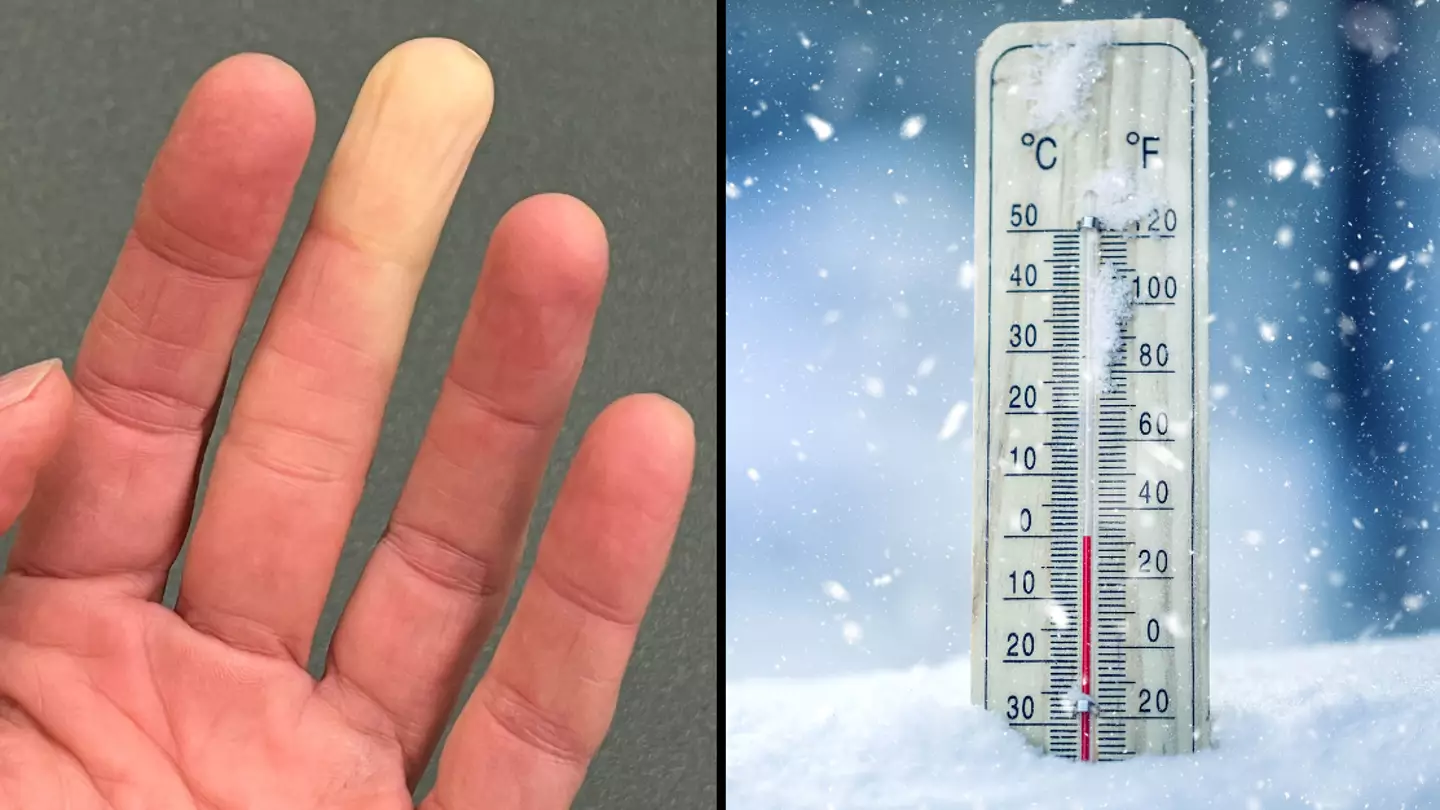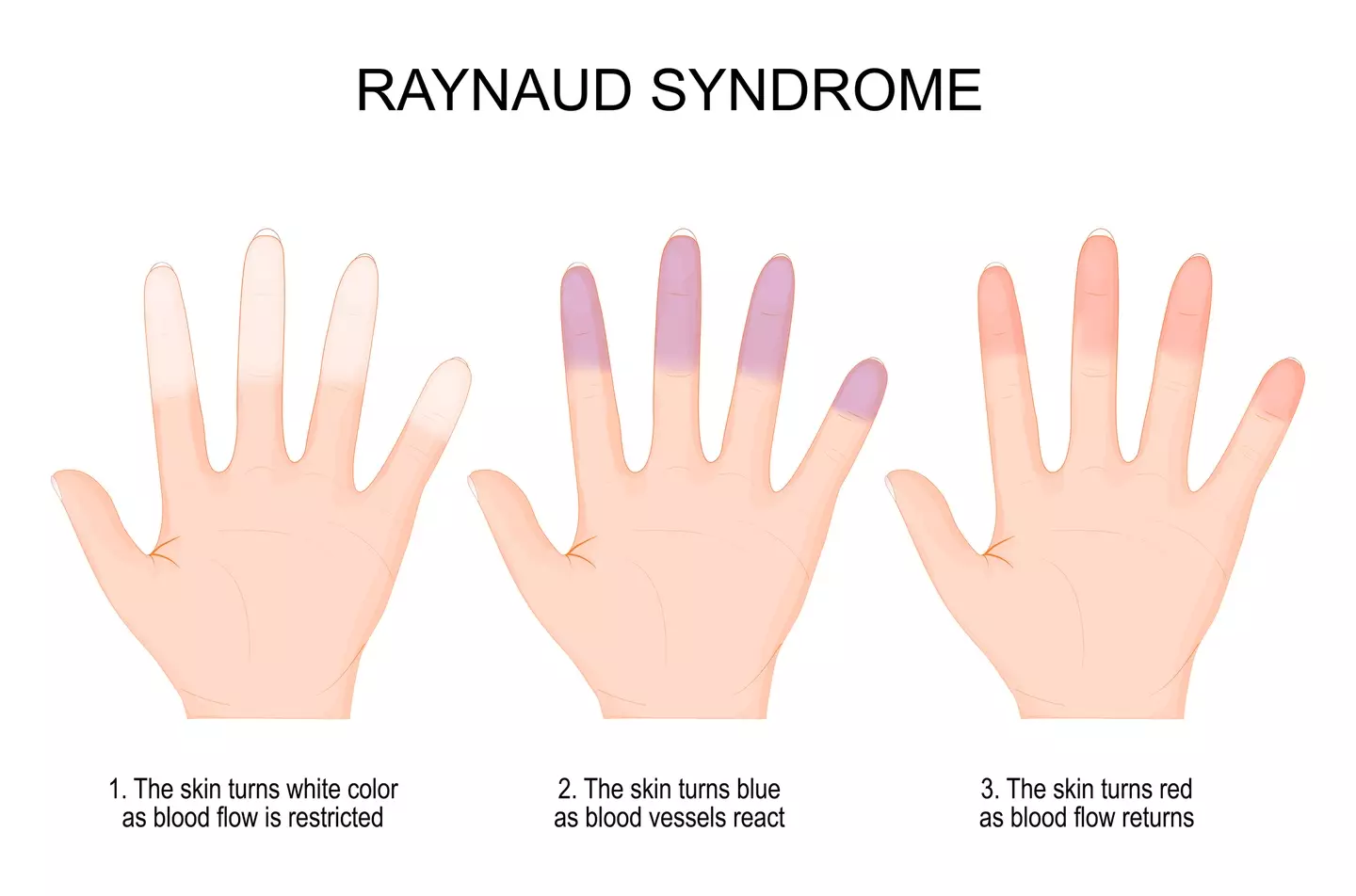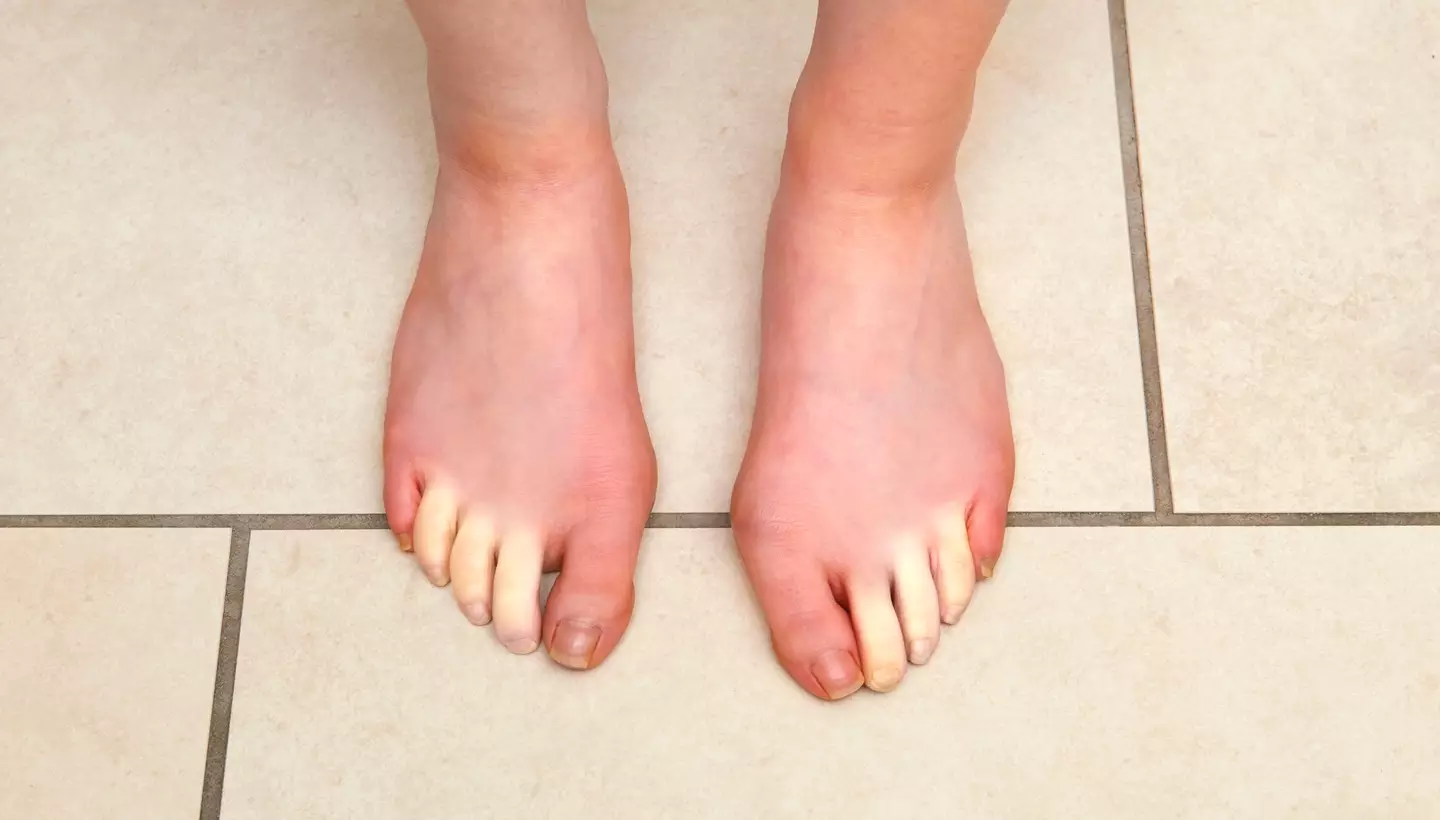
Those suffering from their extremities turning a different colour when they get extremely cold can take a one minute test that could let them know if they have a common disease suffered by millions.
Suffering from horrible cold in your limbs is something many experience during the autumn and winter months as the frost settles in and icy rain takes over.
And for those with Raynaud's disease, it's often a much more unpleasant experience due to the phenomenon.

What is Raynaud's disease?
Raynaud’s disease is a rather unpleasant health condition that around 20 percent of the world's adult population suffer from.
Advert
It impacts people when their extremities have to cope with large drops in temperature during the bitter months of the year.
With Raynaud's, a person's fingers or toes will change colour to a pale white in such a situation. Not only that, but the parts of their impacted will also become frosty to touch.
It's to do with the circulation of blood around your body, with it temporarily narrowing the arteries due to triggers relating to cold weather.
Melisa Lai Becker, MD, told Good Morning America: "If you touch their hands, you can tell the difference.
"Even in a moderately cold environment, they have white, ice-cold hands."
Advert
.jpg)
Symptoms and does it hurt?
People with Raynaud's disease have reported it being a painful thing to experience.
With many suffering it in their extremities such as their nipples, nose, and tongue - on top of the aforementioned fingers and toes - the impact on your blood flow has been reported to cause numbness, pain, and pins and needles, the NHS says.
It is also a sign of a rare autoimmune condition called Scleroderma; a rheumatic disease that can cause inflammation, pain, swelling and stiffness in the joints, tendons, ligaments, bones, and muscles.
Advert

One minute Raynaud's test
For those who experience pain in their extremities and / or discolouring, there is an easy test you can take.
This is courtesy of charity Scleroderma & Raynaud's UK (SRUK).
"Around one-in-six people in the UK are thought to have Raynaud's," SRUK says.
Advert
"For a small percentage of these, it may be a sign of an underlying medical condition, however, most people will have no associated health issues. To find out if you could be affected by this common condition, please take our online test."
SRUK explains that 90 percent of those taking its test get results within 60 seconds.
The test has five questions and can be found here.